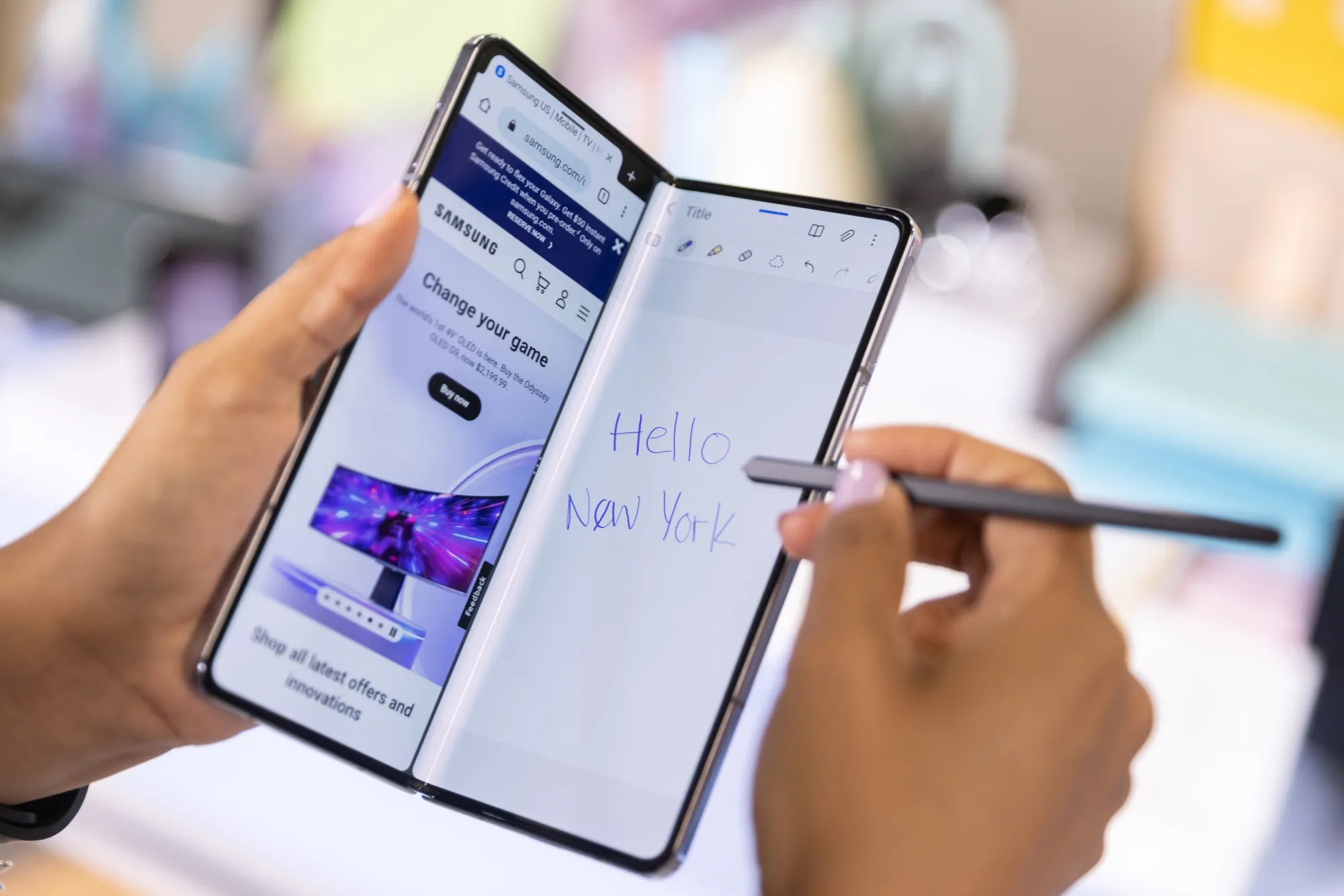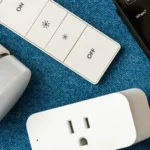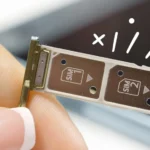In today’s fast-paced world, the ability to multitask is essential. Whether you’re managing work emails while catching up on social media, answering messages during a video call, or switching between various apps, having a smartphone that can handle multiple tasks simultaneously is crucial. But what exactly makes a smartphone great for multitasking? It’s not just about having more apps open at once – it’s about how efficiently your device can juggle them without compromising performance, battery life, or usability. In this article, we will explore the key factors that make a smartphone ideal for multitasking.
Table of Contents
Toggle1. Processor Power: The Heart of Multitasking
At the core of any great multitasking smartphone is a powerful processor (also known as a chip or CPU). The processor is responsible for executing instructions and managing tasks, so a faster, more capable processor directly translates to better multitasking performance. High-end smartphones are equipped with processors like Apple’s A-series chips (A16, A17, etc.) or Qualcomm’s Snapdragon series (such as the 8 Gen 2), which are designed to efficiently manage multiple processes simultaneously.
These processors are built with multiple cores, enabling them to handle several tasks at once. For example, while you might be streaming music in the background, chatting on a messaging app, and browsing the web, a multi-core processor ensures that none of these actions interfere with each other. More cores generally mean better multitasking performance, as the load is divided across different cores, preventing the phone from slowing down.
Additionally, advancements in AI and machine learning on these processors allow the smartphone to predict and optimize tasks based on usage patterns, further enhancing the multitasking experience.
2. Ample RAM: The Key to Smooth App Switching
While a powerful processor is important, sufficient RAM (Random Access Memory) is just as critical. RAM is where your phone stores the data it needs to access quickly, such as app information, browser tabs, and other active tasks. When multitasking, the more RAM your phone has, the better it can manage multiple apps running simultaneously without causing lag or crashes.
Typically, smartphones with 6GB or 8GB of RAM offer decent multitasking performance, while high-end models may boast 12GB, 16GB, or even 18GB of RAM. With this amount of memory, you can switch between apps without delay, keep several apps active in the background, and even use demanding applications like photo editors, gaming apps, and video streaming services concurrently.
For example, a phone with 12GB of RAM can handle intense tasks like gaming while also running a video call and checking emails in parallel. If your smartphone has limited RAM, you may experience lag, slow app switching, or even apps crashing when switching between several open applications.
3. A Large, High-Resolution Display
When it comes to multitasking, a smartphone’s display plays a significant role. A large screen provides more real estate to view multiple apps at once, whether you’re splitting the screen between two apps or simply need a larger canvas for viewing information. While smaller screens can still handle multitasking, they can be limiting in terms of ease and comfort, especially when working with multiple windows.
A high-resolution display also ensures that text, images, and videos remain sharp and clear when multiple apps are open. If your phone’s screen is too small or lacks clarity, multitasking will feel cramped and less efficient.
Larger displays (6.5 inches or more) and high resolutions (1080p Full HD or 1440p Quad HD) are ideal for multitasking, as they offer a more comfortable and immersive experience when switching between apps. In addition, some phones come with screen-splitting or floating windows capabilities, which let you view multiple apps at the same time. The ease of interacting with multiple apps, documents, or websites without constantly switching tabs is a significant advantage for multitasking.
4. Software Optimization and Features
A smartphone’s operating system (OS) and its optimization play a critical role in multitasking. iOS, Android, and HarmonyOS each have their own multitasking features, but their performance can vary depending on how well they are designed to manage system resources.
For instance, Apple’s iOS includes features like Slide Over and Split View, which allow users to run multiple apps on the screen at once. Picture-in-Picture mode allows video content to keep playing while using other apps, making it easier to watch videos while responding to messages or checking emails. iOS is well-known for its smooth app-switching experience, ensuring that apps don’t reload unnecessarily, which is especially helpful when switching between apps mid-task.
Android offers similar features such as Split Screen, where users can view and interact with two apps simultaneously, and App Pairs, which lets users quickly launch two apps in split-screen mode. Android’s flexibility and customization options also mean that users can tweak their multitasking preferences to match their needs. Some Android devices, such as Samsung’s Galaxy series, offer features like Pop-up View and Edge Panels, allowing for an even more streamlined multitasking experience.
The integration of AI features on both iOS and Android also helps with managing tasks more effectively. For example, both operating systems use machine learning to understand your usage patterns, prioritize the apps you use most, and keep them ready for quick access.
5. Battery Life: Keeping Up with Heavy Usage
When multitasking, your smartphone is constantly working hard to manage multiple apps, making battery life a crucial factor in ensuring a smooth experience. While multitasking can drain battery life more quickly than using a single app, modern smartphones are equipped with power-efficient processors and larger batteries to handle extended usage.
For optimal multitasking, a smartphone should offer a long-lasting battery. Most flagship phones now come with batteries that can last through a full day of moderate to heavy use. For intensive multitasking, look for devices that feature fast charging or battery optimization to ensure you can quickly recharge and get back to managing your tasks.
Battery life is particularly important for those who use their phone for work-related tasks, such as video conferencing or running productivity apps, while simultaneously checking social media or managing emails. Phones with larger batteries (4,000mAh or more) and smart power management systems are ideal for those who need to multitask for hours without constantly worrying about running out of charge.
6. Connectivity: Staying Synced Across Apps
A great multitasking smartphone should also excel in connectivity. This includes a fast and stable internet connection, either through 5G or Wi-Fi, as well as Bluetooth and other connectivity options to keep your phone synced with your other devices, such as wearables, wireless headphones, or desktops.
Fast and reliable internet ensures that apps that require an internet connection – such as video calls, web browsing, or cloud-based services – run smoothly without interruptions. Poor connectivity can cause lag, delays, or disconnections, which disrupts the multitasking experience.
Conclusion: The Ideal Smartphone for Multitasking
In summary, a smartphone that excels at multitasking needs a powerful processor, ample RAM, a large and high-resolution display, well-optimized software, long-lasting battery life, and solid connectivity. The combination of these elements ensures that your device can handle demanding tasks, allow you to switch seamlessly between apps, and keep everything running smoothly throughout the day.
Whether you’re a busy professional, a student, or someone who simply enjoys managing multiple apps at once, the right smartphone can make all the difference. With the latest advancements in technology, today’s smartphones are more capable than ever of supporting the multitasking demands of modern life. So, if you’re looking for a device that helps you stay productive, efficient, and connected, keep these factors in mind when choosing your next smartphone.
Related Posts
-
How Can You Save Energy While Using Your Smartphone?
Smartphones have become indispensable tools for communication, entertainment, work, and much more. However, with the…
-
What Are the Best Practices for Smartphone Screen Protection?
Smartphones have become an integral part of our daily lives, serving as our communication hub,…
-
What Makes HP a Leader in the Tech Industry?
Hewlett-Packard, or HP, has long been considered one of the most influential and prominent companies…
-
What Are the Steps for Resetting Your Smartphone Safely?
Smartphones have become an integral part of our daily lives, storing everything from personal messages…
-
How Do You Manage Dual SIM Functionality on Your Smartphone?
Dual SIM functionality has become an essential feature for many smartphone users worldwide. It offers…
-
Amazon Great Republic Day Sale on Best Selling Laptops Upto 40 Off
The Amazon Great Republic Day Sale has arrived, and with it comes an avalanche of…






